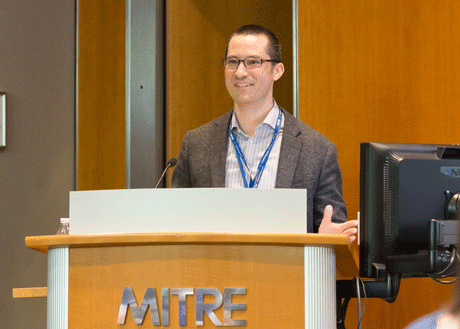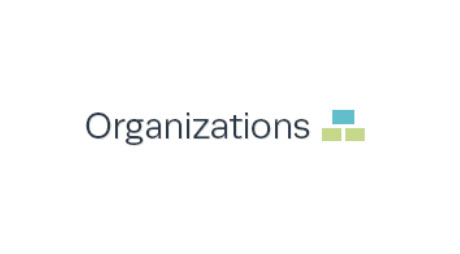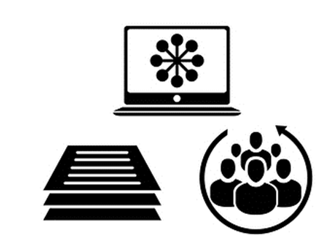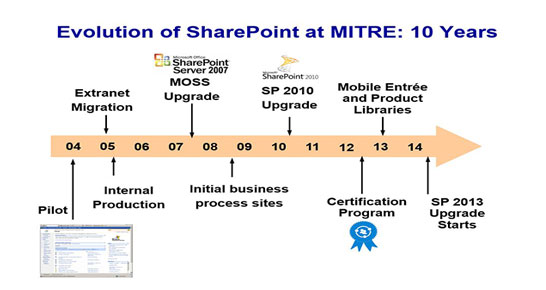
May 10, 2024 | Blog, Cross-Organizational Information Sharing, Knowledge Advantage, Knowledge Sharing Culture, Strategy
When we talk about an origin story, we naturally think of characters in great movies or captivating novels. We rarely think about businesses or organizations. Origin stories, when skillfully woven into an organization’s strategic communications in the defense sector, can pack an effective punch with key audiences.

Dec 8, 2022 | Blog, Internet of Things Security: Challenges and Solutions, Intranets, Business Process, and Knowledge Operations, Machine Learning, Artificial Intelligence, and Data Science
In our new episode of Machine Learning, Artificial Intelligence, and Data Science in the Knowledge-Driven Enterprise, we discuss business drivers, future vision, technologies, and the framework supporting proactive user experiences in information technology.

May 23, 2022 | Assessment & Recognition, Awards, Blog, Capabilities, Cross-Organizational Information Sharing, Human Organizational Systems, Knowledge Operations, Knowledge Sharing Culture, Learning Organization
Foundry’s CIO named MITRE to the CIO 100 for a second year in a row. The award recognizes MITRE’s enterprise platforms IT/knowledge management initiative for accelerating mission impact in 2021.

Jul 28, 2016 | Assessment & Recognition, Blog
MITRE award winner Dr. Alex Tsow discusses a first-of-its-kind framework for active cyber defense at MITRE’s Knowledge Advantage Event May 19. (Photo by Jae Robinson)Authors: Donna Cuomo and Jean ColbertSince 2001, MITRE has run an internal, formal Knowledge...

Jun 27, 2016 | Blog, Collaboration, Partnerships and Social Media, Cross-Organizational Information Sharing
MITRE’s intranet team stays on top of trends like responsive design. They also keep us responsive to one another so that we can engage in the reachback that helps us answer our customers’ questions. In this post, the authors describe how MITRE’s Organization Pages...

Dec 3, 2015 | Blog, Knowledge Advantage, Machine Learning, Artificial Intelligence, and Data Science
MITRE’s knowledge-sharing culture incorporates many kinds of resources, from human, to traditional paper, to digital. For researchers like Melissa Dolph, the wealth of resources enables her to perform on behalf of customers and to network, both of which enrich her...

Jan 29, 2015 | Knowledge Advantage
I believe that knowledge management as a discipline developed because technology enabled the deluge of data we began experiencing about 20 years ago. The ways that we used to organize and share our information were no longer adequate to the task and we needed something new. I’ve spent the last five or six years focusing on data, more specifically on helping organizations treat their data as a strategic asset that requires the same stewardship afforded any other valuable resource within the organization.

Jan 20, 2015 | Blog, Intranets, Business Process, and Knowledge Operations, Knowledge Operations
MITRE started using SharePoint with a small pilot in 2003 and now has a robust set of several thousand intranet and extranet sites based on SharePoint 2010. It is used as a content management platform, a collaborative team platform (for projects, organizations and CoPs), for work process capture and scheduling, employee engagement, and blogging. It has become critical to MITRE’s business processes, resulting in an evolution of its capabilities over the years.

Dec 16, 2014 | Blog, Intranets, Business Process, and Knowledge Operations, Knowledge Advantage
Each of our IT service managers is responsible for operating their service, measuring its impact, managing its cost, and evolving the service over time. How the service evolves, or its “roadmap”, is based on changing user requirements, product evolution, technology changes, cost pressures, and industry trends. The service manager must stay informed and continuously question their assumptions as they develop their roadmaps. But almost as important as the ability to develop their roadmap is the need to communicate their roadmap.

Dec 2, 2014 | Blog, Knowledge Advantage
MITRE’s InfoCenter does not have books, we have 3D printers. Puzzled? I will tell you our story.

Dec 2, 2014 | Blog, Collaboration, Partnerships and Social Media, Knowledge Advantage
In 2009, “social” was still a buzzword, Facebook was years away from an IPO, and Instagram has not been invented. Yet a groundswell was beginning – people used to the ease of sharing in their online social networks came to their offices, only to find that exchanging information was difficult at best. Communications flowed from the top of the organizational hierarchy down, flooding the already overflowing email inboxes – while cross-organizational collaboration was severely impeded.











